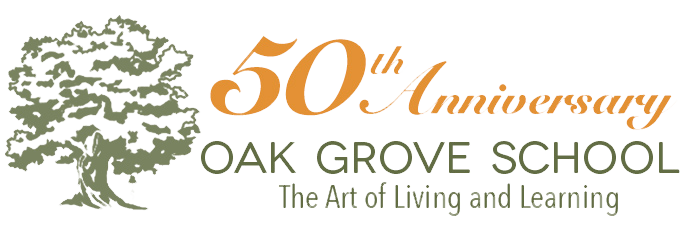We are always learning. Not only is implicit learning offered from minute to minute in our interactions with our students, with parents, and with colleagues, but we also have ample time throughout the year for explicit learning as a community of educators.
About once a month, our high school students attend a Lizard Talk, where a guest speaker presents and shares knowledge on their subject of expertise.
The June 2022 issue of India’s respected magazine, Education World, dives into the importance and relevance of Krishnamurti’s teachings and his global impact on school students and adults alike.
My relationship with Oak Grove began when I first visited the campus in 1997. I had never been to Ojai before. My husband Kevin and I came up for the day to see the Krishnamurti school. It was a weekend, so quiet, but I felt connected to this place instantly. This campus has a magic that is difficult to put into words.
Interacting with the greater Krishnamurti community, immersing themselves in a different culture, and making new friends at their sister schools are three of the intentions of Oak Grove’s annual senior trip to India.
How can the community cultivate a culture that puts people first – that fosters trust and connection, empowers people with resources and support, and inspires all learners to actively engage in their own learning?
Often, people visit Oak Grove School for the first time and share a feeling of peacefulness, of oneness, of familiarity.
Oak Grove families and friends gathered on campus for a socially-distanced outdoor screening of our all-school musical production of Matilda.
The 2020 Peace Day Universal Declaration, as set forth by the United Nations, reads: “Everyone has the right to life, liberty, and security of person.” Rather than holding an all-school event on our campus, as we have done in previous years, over the last week our teachers have been celebrating this year’s Peace Day within the classroom curriculum. Although an anti-bias curriculum is woven throughout everyday learning at Oak Grove, teachers are dedicating more explicit time to anti-bias activities and discussions.
Our anti-bias approach to curriculum aligns with Krishnamurti’s directive to examine our own conditioning. Given the depth and complicated nature of the problem, looking at how we (I) actively engage in image-making, biases, and prejudices, it takes courage and vulnerability to confront these issues in an educational setting.
The idea is not that we rid ourselves of biases, which is likely not possible, but for each of us to understand our own thinking. We must understand our own conditioning, how our own biases, our own image-making, contributes to conflict, to the suffering of others.
For children to grow aware of, even resistant to, conditioning, they must feel safe and understood. They must be able to ask practical and perennial questions alike, engage in rigorous intellectual explorations, and nurture the awareness of being sensitive to the world outside them, as well as the world within. Once we understand our own thinking, we are able to see how that thinking can unconsciously guide our actions.
As eloquently stated by John Lewis, “We in the movement decided to actualize our belief that the hatred we experienced was not based on any truth, but was actually an illusion in the minds of those who hated us.” Without justice there can be no peace.
See what Krishnamurti has said about image-making.
Jodi Grass
Head of School
To ease any health concerns about returning to campus following the Thomas Fire, please read the following update on our post-fire campus cleaning efforts.
CONTACT OAK GROVE
Oak Grove School of the Krishnamurti Foundation of America
CALL: 805 646 8236
EMAIL: info@oakgroveschool.org
MAIL: 220 West Lomita Avenue
Ojai, California 93023-2244
Latest News
 Peace Week 2025September 29, 2025 - 3:02 pm
Peace Week 2025September 29, 2025 - 3:02 pm First Day of School 1975September 25, 2025 - 12:59 pm
First Day of School 1975September 25, 2025 - 12:59 pm The Art of Living & LearningSeptember 24, 2025 - 5:08 pm
The Art of Living & LearningSeptember 24, 2025 - 5:08 pm Garden Dispatch: Growth & Garden DreamsSeptember 23, 2025 - 5:38 pm
Garden Dispatch: Growth & Garden DreamsSeptember 23, 2025 - 5:38 pm Annual Report 2024-25September 17, 2025 - 12:03 pm
Annual Report 2024-25September 17, 2025 - 12:03 pm
Non-Discrimination Policy
Oak Grove School does not discriminate on the basis of any individual or group identity characteristics, such as but not limited to race, color, gender identity or expression, sexual orientation, age, national or ethnic origin, differing mental or physical abilities, or family structure in the administration of its educational or admissions policies, employment practices, scholarship, and other school-administered programs. View the unabridged policy.


